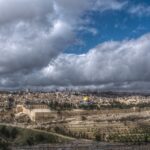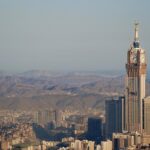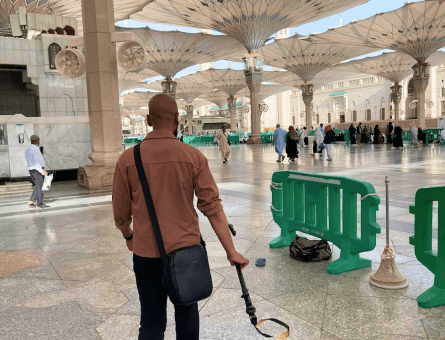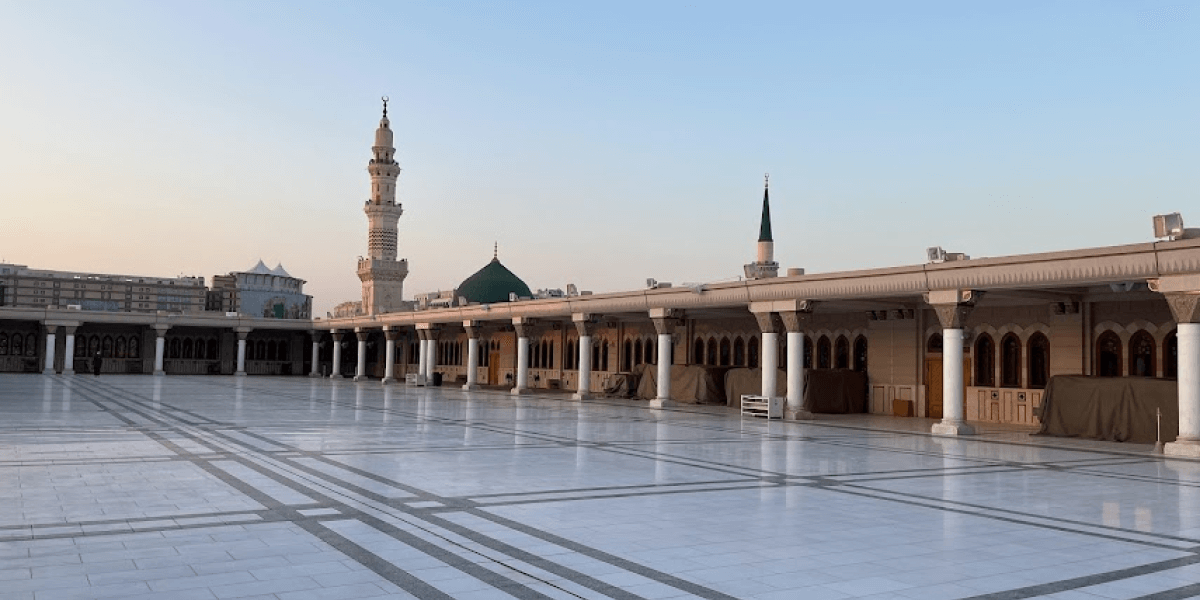The Seven Mosques – Al-Masjid Al-Sab
Madinah, the city of Prophet Muhammad (PBUH), hosts some of the most sacred historic sites in Islam. The seven mosques is one such landmark. Located on the western edge of the Sela Mountain, the seven mosques is a complex of small, historic masjids (mosques) that marks the site of the Battle of Trench.
Each of the mosques pays tribute to the companions who bravely fought during the Battle of Khandaq (5 AH). The mosques are also known as al-Masjid al-Sab, meaning “seven” in Arabic. Even though there are six mosques in the complex, originally, Masjid Qiblatayn was also considered a part of the seven mosques.
Here is everything you need to know about the seven mosques and their significance in Islam.
Masjid Al Fatah
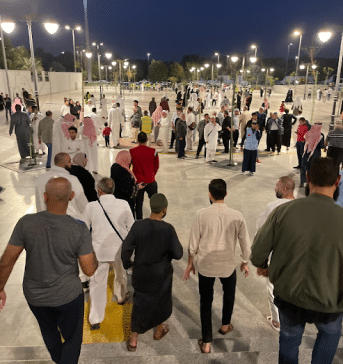 Constructed above a hill in the western region of the Sela Mountain, Masjid al Fatah is the largest of the seven mosques. It marks the site of the Battle of Ahzab and pays tribute to the historic victory of the Muslims of Madinah.
Constructed above a hill in the western region of the Sela Mountain, Masjid al Fatah is the largest of the seven mosques. It marks the site of the Battle of Ahzab and pays tribute to the historic victory of the Muslims of Madinah.
According to Islamic history, Masjid al Fatah was first built during the Caliphate of Umar (RA) at the site of the command post of Prophet Muhammad (PBUH). It was renovated by Saifuddin Abu al-Hija in 1154 and restored during the reign of Fahad bin Abdul Aziz al-Saud.
Jabir (RA) narrated that Prophet Muhammad (PBUH) made dua for three days during the Battle of Ahzab. One of these supplications was: “O Allah, Revealer of the Book, swift in taking account, turn the confederates to flight, O Lord defeat them and cause them to quake.”
“There is no God but Allah, the One who conferred upon His armies the honour of victory and helped His servant and routed the confederates alone; there is nothing after that.”
The roof of Masjid Fatah provides a panoramic view of the entire battlefield. It is also known as Masjid A’la and Masjid Ahzab.
Masjid Salman Farsi
Masjid Salman Farsi is situated 20 metres south of Masjid al Fatah. The mosque is named after Salman Farsi (RA), as he led the construction of the trench during the Battle of Khandaq. According to Islamic tradition, Masjid Salman Farsi was constructed during the caliphate of Umar bin Abdul Aziz and was renovated once in 1154 Hijri during the ministry of Saifuddin Abu al-Hija and the second reign of the Ottoman Sultan Abd al-Majid I. The striking feature of Masjid Salman Farsi is its small size, as it has a 7-metre-long hall that is only 2 metres wide.
Even today, Masjid Salman Farsi pays tribute to the idea and leadership of Salman Farsi (RA) because if it wasn’t for him, the Muslims would have never won the battle. Masjid Salman Farsi is proof that in order to win a battle, you don’t need to have a strong army but a wise strategy.
Masjid Abu Bakr
Located 15 metres southwest of Masjid Salman Farsi, Masjid Abu Bakr is built on the site where the first caliph, Abu Bakr (RA), led the Eid prayer alongside Prophet Muhammad (PBUH). Masjid Abu Bakr was constructed for the first time in the era of Omar Bin Abdul Aziz (705-709/89-91 AH) and was later renovated by Sultan Mahmoud II during his reign in 1838 CE/1254 HJ.
Masjid Abu Bakr features square-shaped architecture and is approximately nine metres long. The mosque is constructed using black basalt stones. The interior of Masjid Abu Bakr is painted white. Other distinctive features of Masjid Abu Bakr include a 15-metre high minaret, a 6-metre wide and 13-metre-long rectangular courtyard, and a 12-metre high ornate dome.
The minaret of Masjid Abu Bakr closely resembles to Bab as-Salam Minaret of Masjid Nabawi. Little do people know that Masjid Abu Bakr used to have a slightly elevated white structure that was razed to make more space for the parking lot.
Masjid Umar
Situated southwest of Masjid Nabawi and 10 metres south of Masjid Abu Bakr, Masjid Umar was constructed on the site of the command post of Umar (RA) during the Battle of Trench. It is located at a higher altitude and is on the same plain as the Al Fatah Mosque.
Masjid Umar features the same architecture as Masjid al Fatah, indicating that both mosques were constructed and renovated at the same time. According to Islamic scriptures, Umar (RA) prayed in this masjid during his caliphate.
Masjid Ali
Measuring only 6.5 metres wide and 8.5 metres long is Masjid Ali. It is situated on a hilltop high above the other mosques and is in the south of Masjid Fatima. According to Islamic history, it was from here that Ali (RA) joined the Battle of Trench, and also led the Eid Salah during his caliphate. You have to climb a small step in order to go inside the mosque. It is believed that Masjid Ali has been constructed and renovated alongside Masjid al Fatah.
With the aim to maintain its original architecture, the government of Madinah is renovating Masjid Ali and also building a large park around it.
Masjid Fatima
Located at a short distance to the west of Masjid Ali is Masjid Fatima. It is also known as the Mus’ad ibn Mo’az Mosque and is the smallest of the seven mosques. Masjid Fatima measures approximately 4 x 3 metres and was built during the reign of Sultan Abdul Majid I during the Ottoman Era.
Masjid al-Khandaq
The Mosque of the Trench or Masjid al-Khandaq is also known as the “Mosque of the Conquest.” It is one of the most modern mosques at the site. It is located at the foot of the Sela Mountain in Madinah, Saudi Arabia. Masjid al-Khandaq is highlighted by a trench northwest of the city of Prophet Muhammad (PBUH).
As the name suggests, the mosque pays tribute to the Battle of Trench that took place between the non-believers and the Muslims of Medina during the life of Prophet Muhammad (PBUH).
The mosque’s bright white architecture features white columns, wooden doors, twin minarets, and a wood-decorated mihrab that was constructed using black and white marble. Masjid al-Khandaq is the centre of attention of the historic site of the seven mosques.
How Many Mosques Are There in Saudi Arabia?
There are a total of 94,000 mosques in Saudi Arabia. These include Masjid al-Haram, Masjid Nabawi, Masjid Quba, Masjid al-Minaarat, Masjid al-Qiblatyn, and the seven mosques.
Summary – The Seven Mosques
Also known as al-Masjid al-Sab, the seven mosques mark the spot where Prophet Muhammad (PBUH) and his beloved companions stood to guard the Muslims during the Battle of Khandaq (Battle of Trench).
Even though originally, there were seven masjids in this complex, today, the actual number of mosques is six. Despite this, the small historical complex is still referred to as the seven mosques. Al-Masjid al-Sab is located in the western region of Mount Sela in Medina, Saudi Arabia.
It is a popular place for Ziyarah and is visited by millions of Muslims every year. As we move from south to north, the placements of the mosques are Masjid al-khandaq, Masjid Fatima, Masjid Ali, Masjid Umar, Masjid Abu Bakr, Masjid Salman Farsi, and Masjid al Fatah.
So, if you get a chance, do visit the seven mosques as each one has its own significance and is tied to the life of Prophet Muhammad (PBUH) and the establishment of the Islamic community.
Through His Names
New course with
Ustadh Shabbir Hassan





